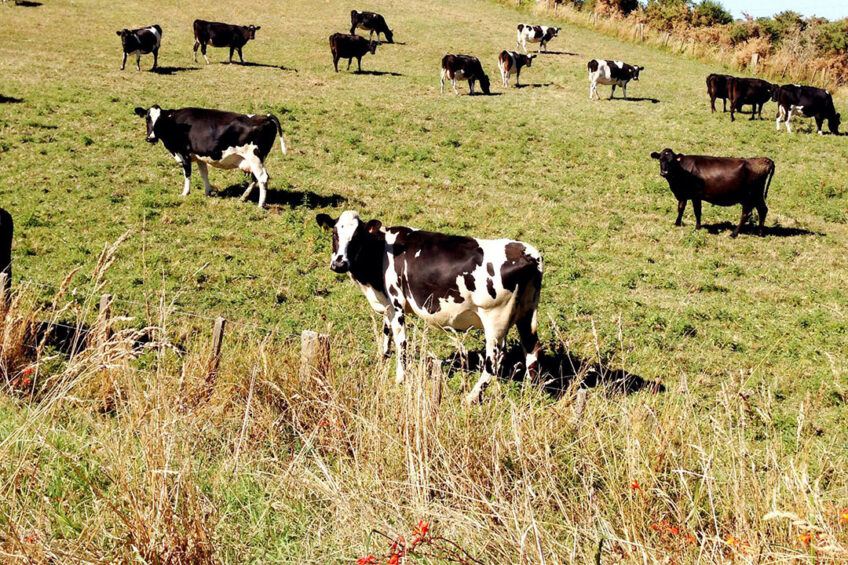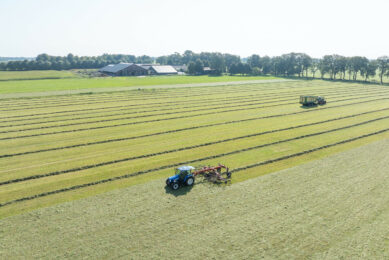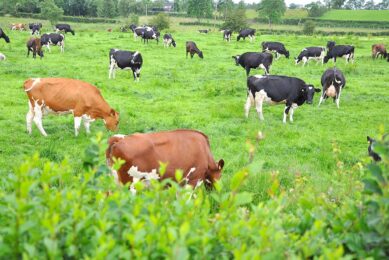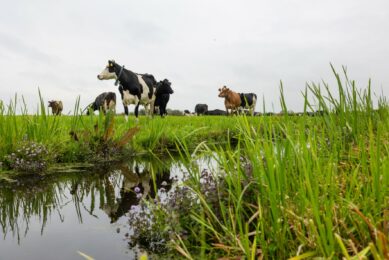Profitable grazing strategies for dairy cows

Prescribed grazing strategies offer an effective way to improve animal productivity and profits. The following is a review of some of the strategies that help achieve these targets.
Farm location and productivity
Careful farm selection is critical to the amount of investment needed and to enable future low operating costs. The farm site must have productive soils managed for high-producing pastures. It was found that each additional tonne of pasture dry matter produced increased net profit by US$190 on dairy farms, mainly due to the reduced levels of purchased feed.
Use of nitrogen fertiliser
A study was conducted to compare concentrate usage and stocking rates of dairy cows under 2 levels of N fertilizer (200 or 300 kg N/ha) in a continuous grazing system. When applying the fertilizer at 300 kg N/ha, there was a reduction in concentrate usage from 1.8 to 1.2 tonnes/cow and the stocking rate was increased from 2 to 2.4 cows/ha while maintaining a fixed yield either way.
The improvement here could be attributed to the fact that nitrogen is essential in the formation of protein, which makes up much of the tissues of pastoral plants. It is also a component of the chlorophyll molecule, which enables the plant to capture sunlight energy by photosynthesis, driving plant growth. Increasing the use of fertilizer above the said rate of application is, however, not recommended as it may result in leaf scorch, soil acidification, reduced vitamin and mineral content in crops, and/or release the nitrous oxide gas into the air.
Weed control
Weeds left uncontrolled can decrease the yields of several major crops by more than 50% due to competition for water, nutrients, and other resources. In a study, the presence of weeds resulted in an annual increase in weed management costs of US$28 million and a yield loss of US$15 million, resulting in an annual loss to field crop producers of US$43 million. Various herbicides are available to kill weeds but the following points should be considered for effective use thereof:
- Weeds are best controlled when in their rosette stage with a height of less than 10 cm.
- Herbicides should not be sprayed during gusty conditions that favour their contact with non-targeted crops. Also, they should not be applied at high-temperature conditions that favour rapid evaporation of the herbicide.
- Herbicides should be applied carefully so that sensitive non-target plants are not seriously injured or killed when herbicides are allowed to contact their leaves, stems, roots, or the soil in their rooting zone.
- The repeated use of a particular herbicide should be avoided as it allows the weed to adapt to it and can hence survive and increase in the population until the herbicide no longer effectively controls them.
Rotational vs continuous grazing
In well-managed controlled grazing, utilisation of forage under rotational grazing is 65% compared to only 25-30% under continuous grazing. This is why it is often said that stocking rates can be doubled with rotational grazing. Additionally, hay requirements were reduced by 60-80% with rotational grazing. Although rotational grazing typically has higher upfront costs because of the need for more fencing and other management tools, the system offers other economic benefits, including healthier herds, which results in fewer veterinary expenses with reduced maintenance and fertilizer costs.
Crop mixtures
Recent research has emphasised the beneficial effects of white clover inclusion in perennial ryegrass (PRG) on animal performance due to its ability to biologically fix nitrogen (N) while maintaining or increasing pasture DM production and pasture nutritive value. Studies showed that adding white clover to PRG swards increased profitability by US$320/ha. It was also reported that feeding pea-wheat intercrop, for example, instead of grass, halved the concentrate requirement for dairy cows without adversely affecting milk production (Table 1), indicating that the intercrops may be a viable cost-saving option for dairy farmers.
Poisonous plants
Losses from plant poisoning can cause financial and economic impacts that threaten grazing activities. In the US, for example, poisonous plants cost producers and consumers upwards of US$250 million annually. These costs are attributable not only to livestock deaths and diminished productivity related to plant poisoning but also to the management costs associated with the increased usage of forage in areas infested with poisonous plants.
Marketing tips
Milk production is probably the most important item in dairy farming and is regarded as more profitable than all other farm outputs. The milk profits may, however, vary due to the change in the cost of concentrate feeding from time to time each year. Typically, the milk-to-concentrate ratio is approximately 1:1, i.e., a litre of milk has the same value as 1 kg of concentrates. If the price of milk is equal to or greater than the cost of concentrates, as in the case where cows produce their milk mostly from grass, then the period is said to be profitable, and vice versa.
The sale of calves and cull cows is also a major component of the profitability of dairy herds. The following points should, therefore, be considered when attempting to make more profits:
- Profits increase with the higher number of animals sold on the same lot. The buyers usually prefer to buy animals from the same source, not from multiple sources to save effort and reduce the cost of transporting animals from one place to another. There is also a better opportunity here for selection and preference by the buyer from among animals sold in large numbers.
- The healthier the animal sold, the higher its price can be obtained when sold. For sick or poorly conditioned animals, the price may drop by 20% or more.
- It is preferable to send the animals to the nearest markets. Transporting animals for long distances negatively affects the weight of the animals and thus reduces the profit resulting from the sale thereof. It was found that the weight of the animals decreases to a varying extent depending on the distance of transportation (Table 2). This decrease in weight occurs as a result of the excretion of larger amounts of urine and faeces during transportation, in addition to a decrease in the degree of tissue formation of the animal due to the loss of some moisture from the body tissues as a result of breathing.
References are available from the author upon request.










